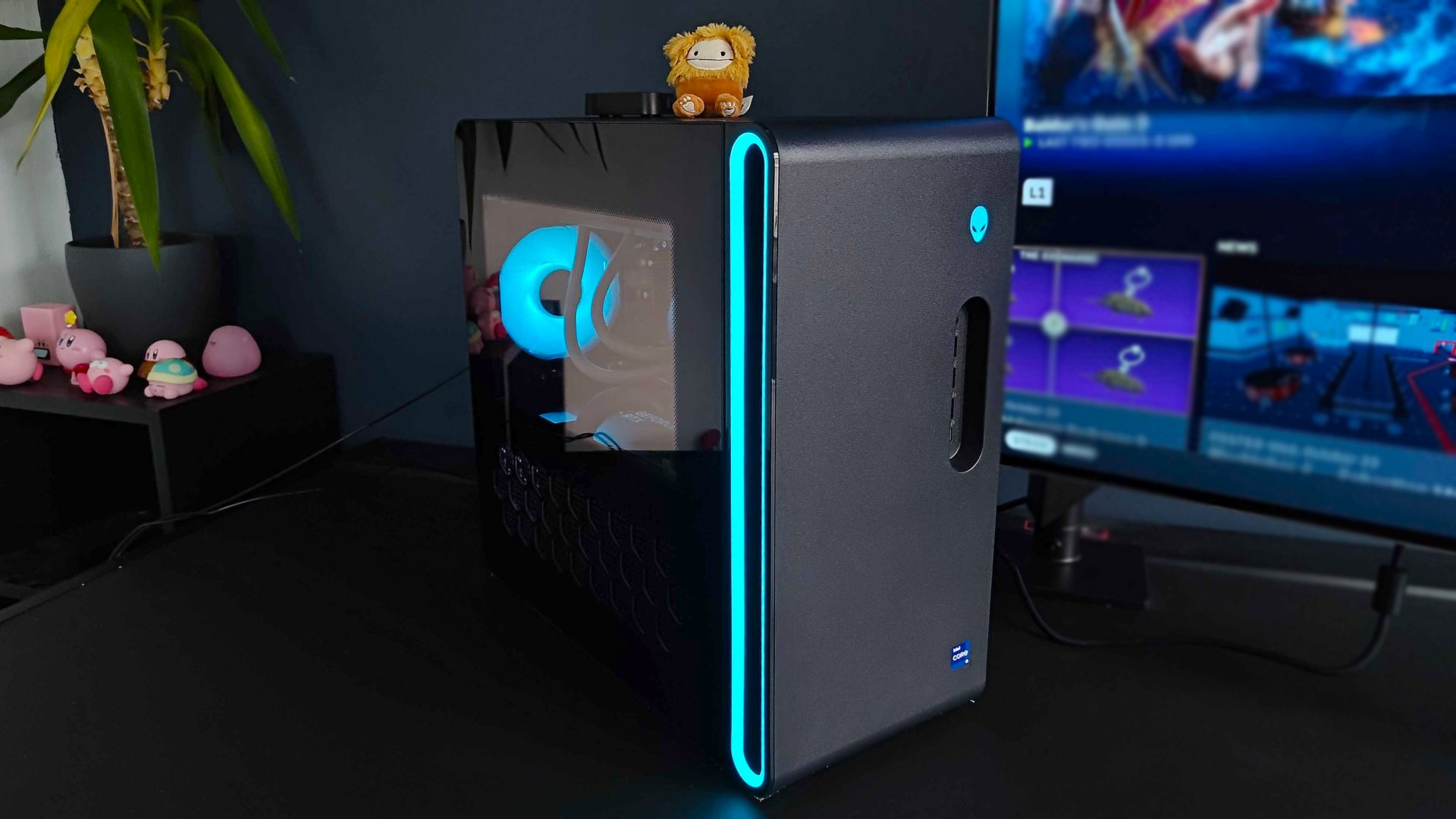GamesRadar+ Verdict
The Alienware Aurora R16 is more down to earth than its predecessor in terms of looks, but the RTX 4090 version provides out-of-this-world performance in demanding PC games. It’s still a pain to upgrade and its proprietary parts pale compared to alternative builds, but Dell has managed to transform its space oddity into a more efficient powerhouse with subtle flair for 2024.
Pros
- +
Top-tier performance
- +
More efficient design
- +
Quiet cooling
- +
Plenty of ports
Cons
- -
Upgradability is limited
- -
Lacks character compared to R15
- -
Lofty price
Why you can trust GamesRadar+
November 7, 2025 - I've just wrapped up testing on the Alienware Aurora 2025, which is virtually the same machine as the R16 but with new-gen components. Even though Dell has dropped the numeric generational moniker, its latest rigs use the same case design, AIO cooler, and placement. Simply put, if you see a "new" model for a higher price than before with the same components, it's not linked to getting a completely new generation of system.
I love quirky gaming PCs, but the Alienware Aurora R16 is a rig that’s designed to shake off any weird kid allegations. Unlike its R15 predecessor, Dell’s latest system has ditched the Portal turret getup and instead wears a sleek little black case that embodies conventional efficiency rather than eye-catching aesthetics. Is that ultimately a good thing? Absolutely, but I can’t help but feel that many players looking for an oddball gaming machine will end up eyeing other brands.
With prices starting at $1,249.99 / £1,149.99, The Alienware Aurora R16 is pretty approachable. At least, it is if you’re looking for a low-key machine, as the RTX 4090 model I’ve been testing comes in at a whopping £4,179.00 / $4,694.99. There’s no getting around the fact that’s a lot of money to pay for a rig, even if it will produce fantastic results in even the most demanding new releases. Normally, I’d take that fact for what it is, but with Dell stripping back its latest system to what is essentially a black box with some complicated, proprietary innards, the new best Alienware gaming PC contender on the block is a harder sell.
That aside, I am actually on board with this down-to-earth powerhouse, and the Alienware Aurora R16 targets many of my gripes with the R15. For reasons I’m about to delve into, I do think this system is worth checking out, even if Dell is going through that same “trying to be normal” phase I experienced after leaving high school.
Price | From $1,249.99 / £1,149.99 |
CPU | Up to Intel Core i9-13900K |
GPU | Up to Nvidia GeForce RTX 4090 |
RAM | Up to 64GB DRR5 |
Motherboard | Custom Z690 |
Storage | 8 TB (2 x 4 TB), M.2, PCIe, SSD |
Power supply | 1,000W |
Design
Since I’m already rattling on about the Aurora R16’s looks, let’s flesh out the latest Alienware’s composition. Compared to the Alienware Aurora R15, this system lacks the same level of visual identity, with its getup boiling down to a black box with a glowing Zeta-head button at a glance. It’s only when you lean in for a closer look that you realize Dell is still embracing a subtle level of design shenanigans, particularly when it comes to its choice of cooling setup.
Alienware PC fans are normally concealed to some extent, but the R16 takes a leaf out of Dyson’s book with its AlienFX stadium loop. The crevice is used to channel air into the system using what is otherwise a standard setup, with exhaust fans occupying the top and back of the case. A honeycomb-shaped grill on the side panel also contributes to shifting air in and out – something that ordinary builds will often skip for space-saving and style purposes.
The weird void at the front is charming in a way and the RGB-lit stadium loop helps turn it into a spectacle. Only the left side of the trap features illumination, so you’ll want to keep that in mind if you have a specific place picked out for your rig. I’m also not convinced the cove won’t become a dusty realm after a little while, but I’ve yet to see any build-up after a few weeks of use.
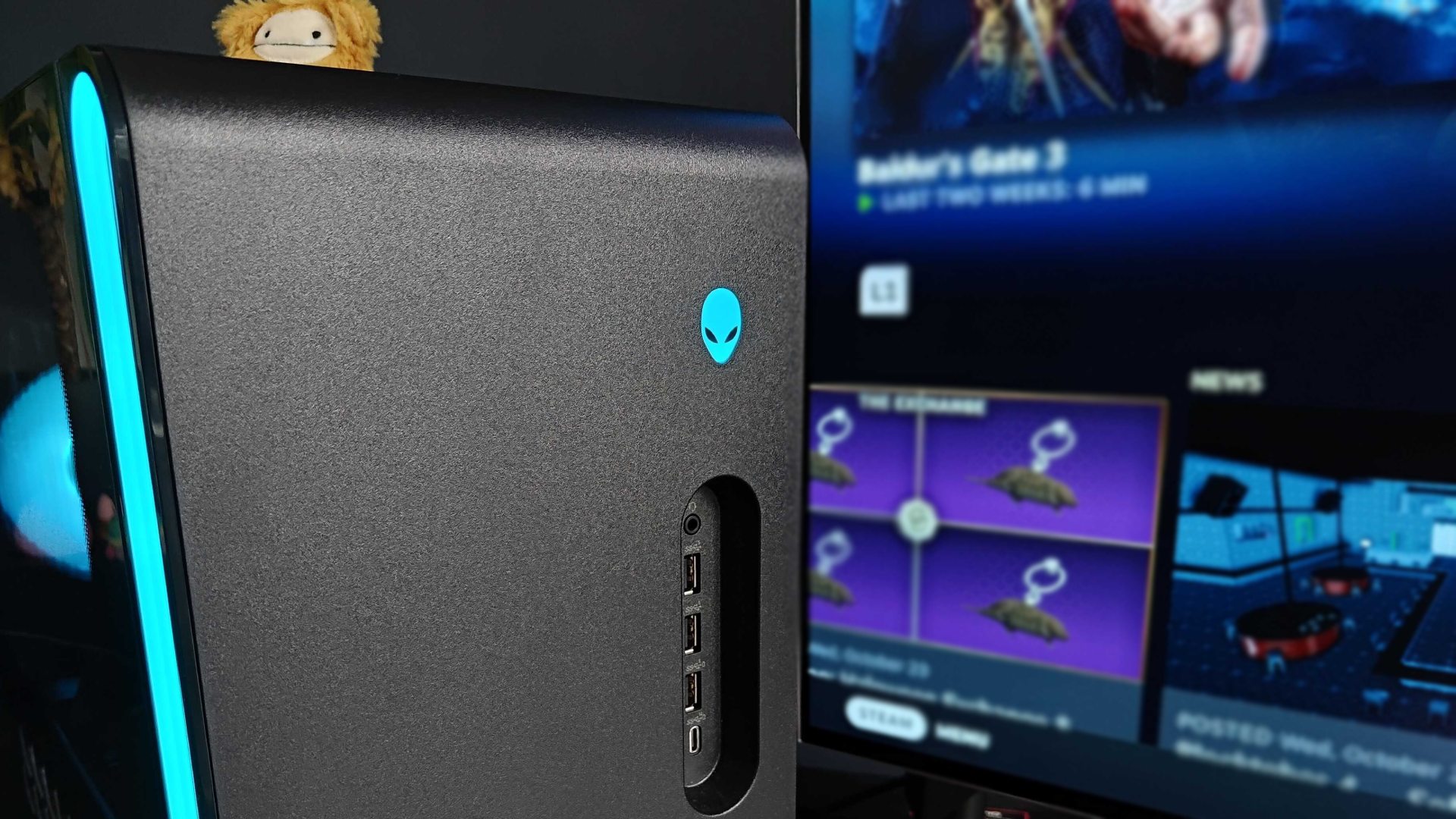
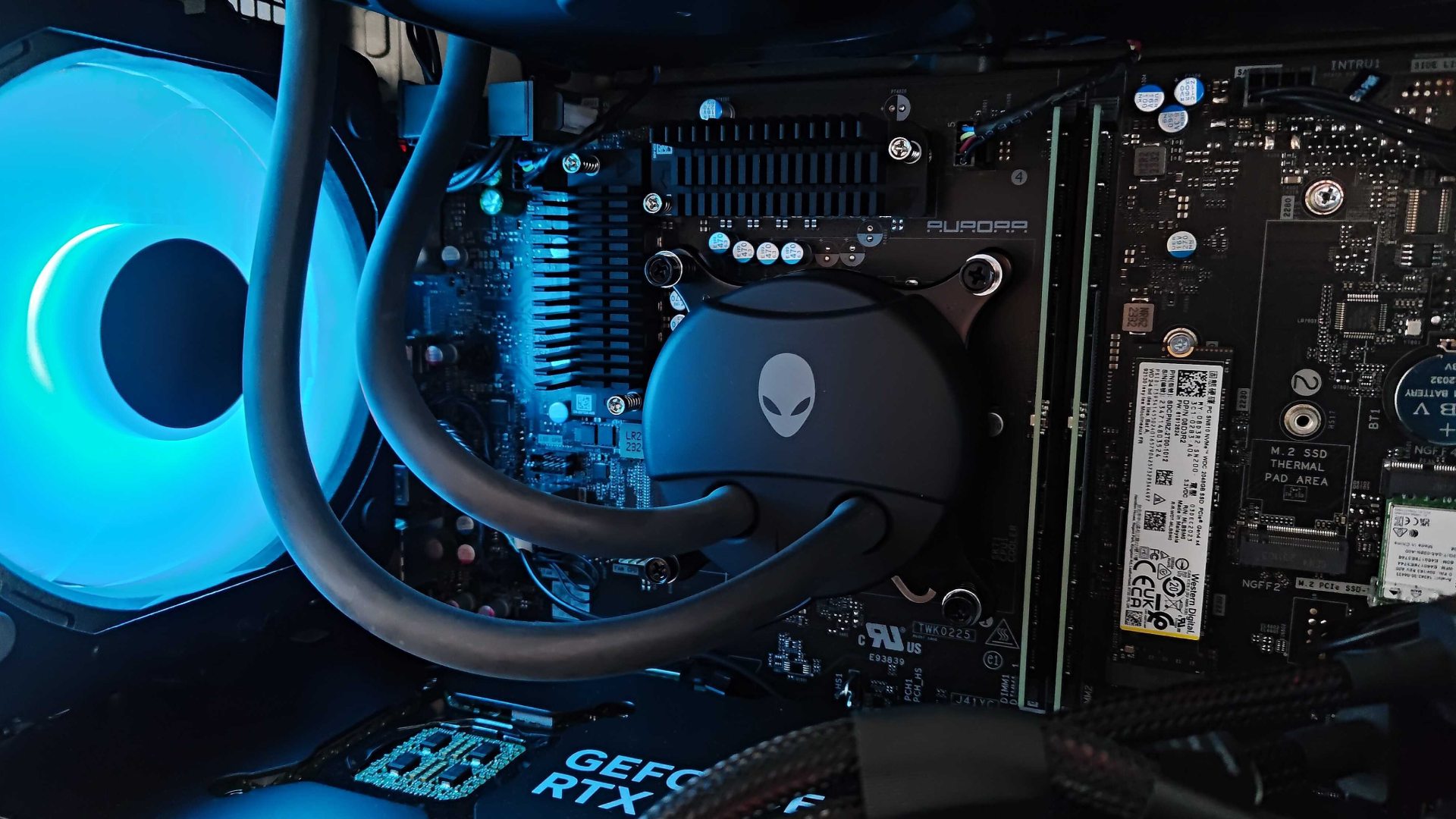
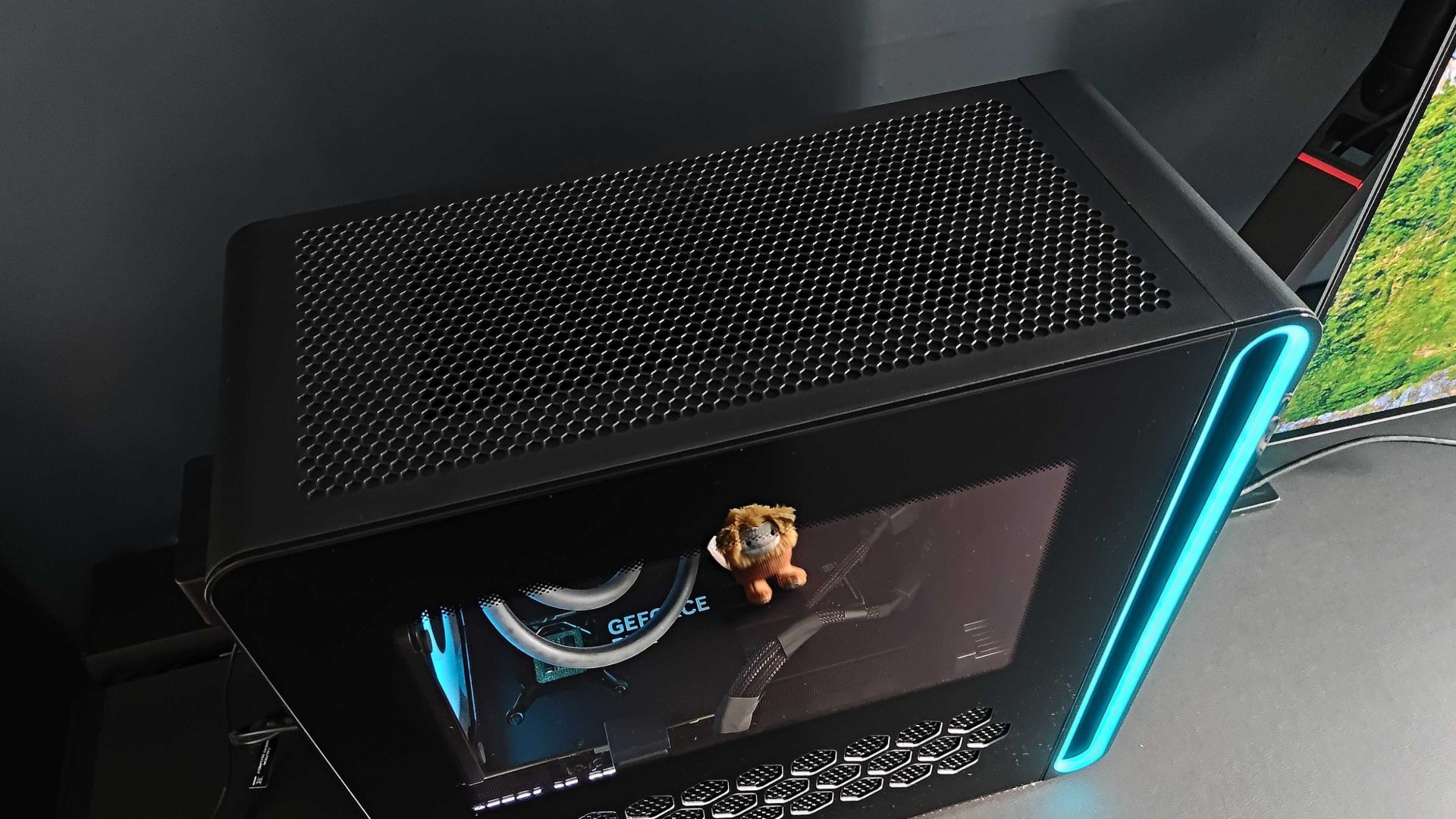
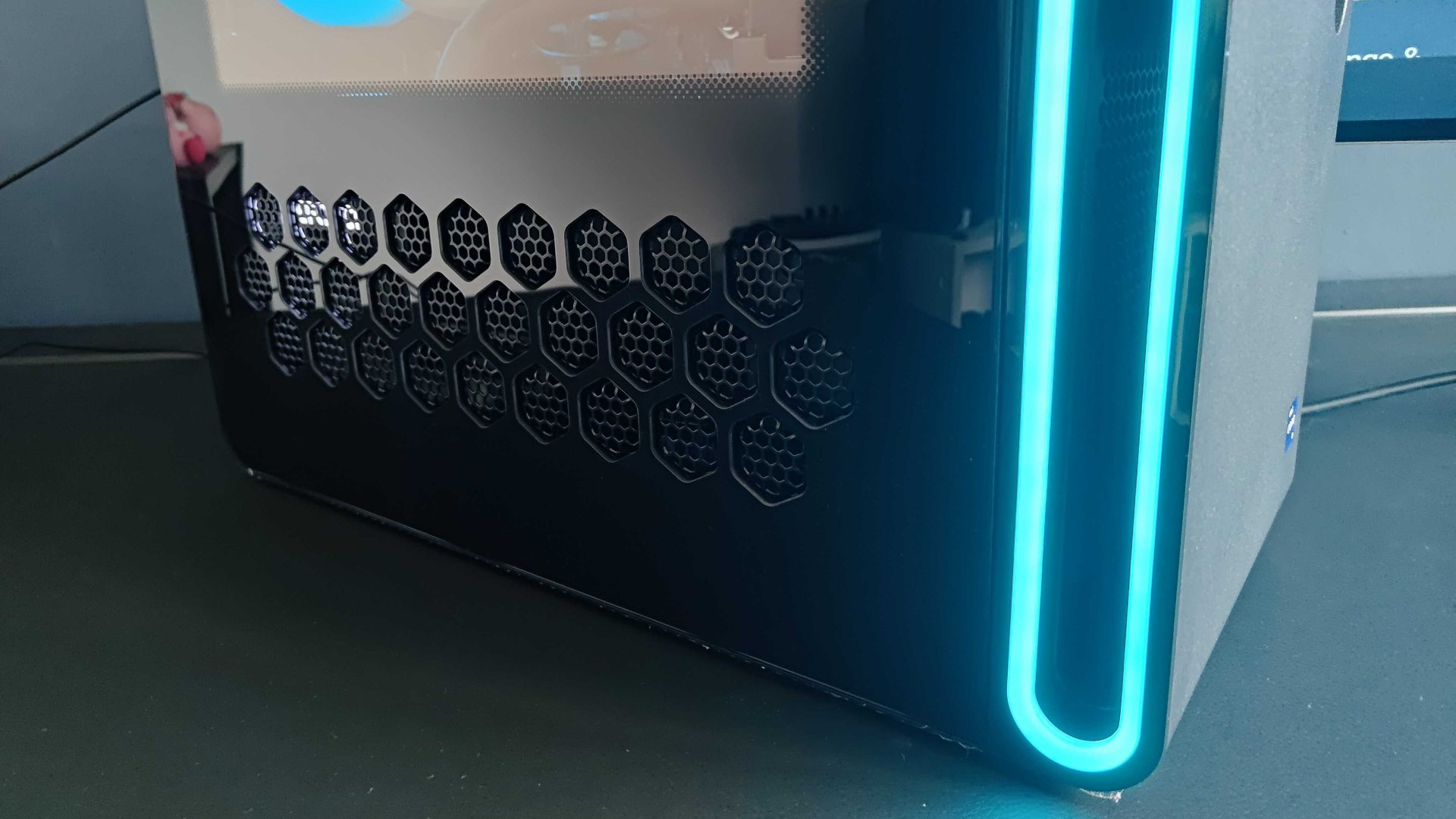
Dell may have ditched a lot of redundant plastic with its Aurora rig, resulting in a volume reduction of around 40%, but not much has changed inside. You’ll still be greeted by a very similar custom motherboard and AIO cooler, with your choice of graphics card eating up any remaining space. Things are a little cramped inside, but that means nothing since you won’t be delving inside that often. Upgradability pretty much caps out with swapping the GPU, popping in an extra SSD, or switching out the two DIMM sticks of DDR5 RAM – an unfortunate inheritance carried over from the R15.
Weekly digests, tales from the communities you love, and more
At this stage, the fact that Alienware PCs aren’t for tinkerers is well documented. Despite its more ordinary case shape, that absolutely applies to the R16 too, and it’s not really a con for players looking for one of Dell’s rigs specifically. The new Aurora effectively splits its potential target audience down the middle into those seeking a subtle, boutique powerhouse and setup enthusiasts looking for a showstopping piece of hardware. If you’re in the latter camp, you’ll either want to get hold of an older R15 or hope the next system starts leaning into the brand’s instinctive weirdness again.
To round off my design thoughts, I want to touch on two elements around the back. The first relates to Dell’s PSU, as it now uses a standard cable rather than a C19. This put me in a pretty good mood before realizing there’s still a lack of thumbscrews for getting inside the rig, with the case opting for a single screw release system instead. In theory, this should be easier, but daftness will ensue if you don’t unscrew it all the way before pulling, leading you to think the catch is faulty. Yes, this happened to me, and rather than take any of the blame, I’m going to be grumpy about it.
Features
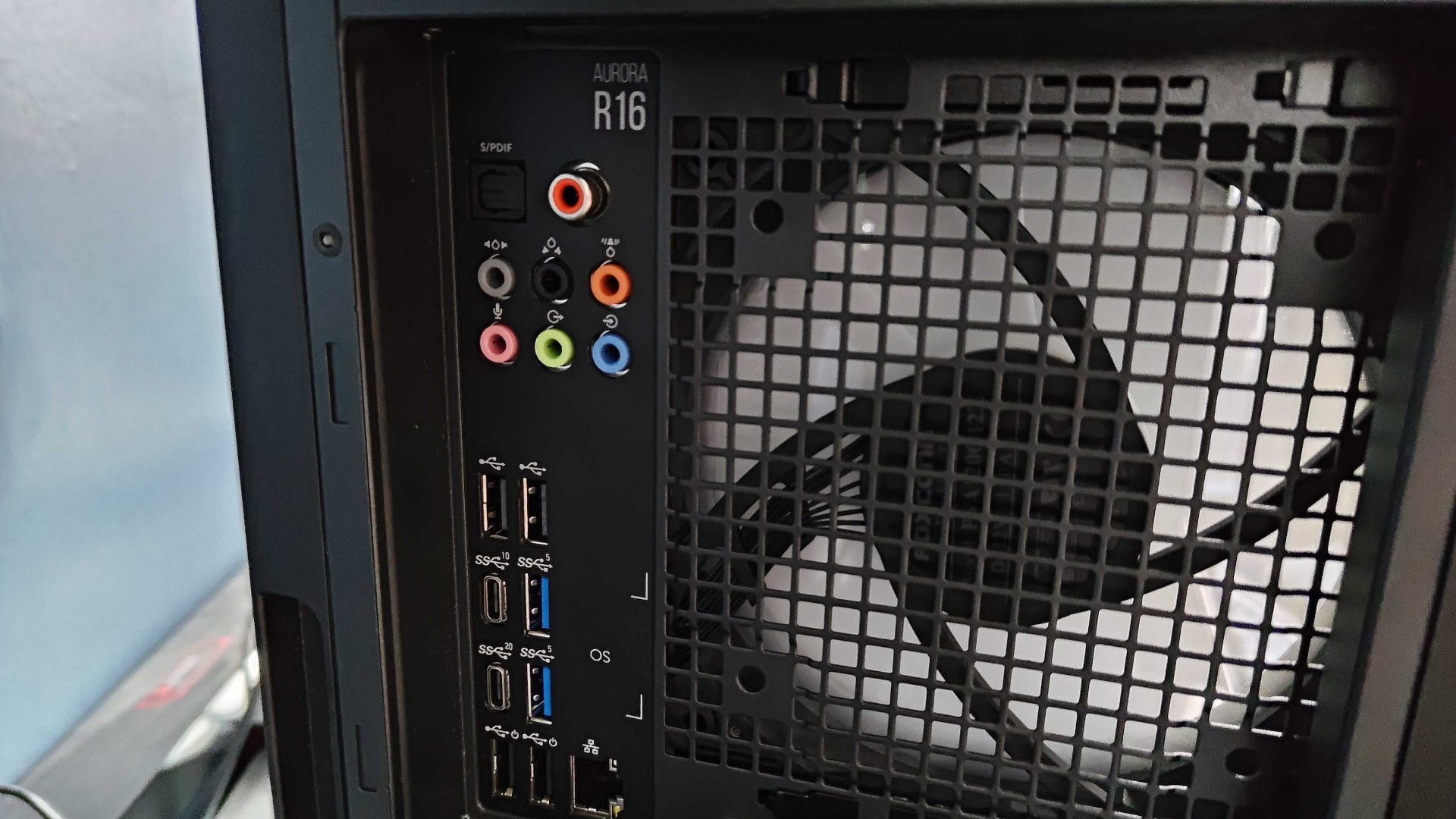
Where the R16 loses points for its proprietary motherboard design, it gains them by offering a versatile array of ports. The main IO is rocking a hearty number of USB ports (six USB-A and two USB-C) alongside a trio of surround sound jacks, optical out, and a coax phono. If you’re big into gaming sound systems, this array of connectors alone should grab your attention, as you’d have to spend a pretty penny on a mobo to achieve the same level of connectivity.
There are three USB-A ports, a USB-C, and a headphone jack parked right at the front, hiding within a recess. This feels like the right number of front-facing connectors for me personally, as I can’t imagine having to hot-swap more than two devices at any given time. But, it is still slightly fewer than what’s offered on some larger PC cases, and worth keeping in mind depending on your usage rituals.
It's worth noting that each Aurora build's back IO can vary depending on the system you pick up. I've tested a "2025" RTX 5070 Ti build, and it cuts the USB-A ports down to four and USB-C to just two. I'd make sure to check your specific build specs if you need more inputs, as even if you aren't going for the cheapest model, you might find that the motherboard's back connectors are lacking.
Moving back inside the case, I want to chat a bit more about Dell’s AIO cooler and accompanying fans. Despite the strategy appearing almost the same, the changes to the case shape and overall streamlining actually help the cooling innards to shine. Perhaps “shine” isn’t the right word since my praise relates specifically to audible traits, as I could barely hear anything going on inside during use. Gone are the harrowing groans, wooshes, and moans of the R15, and the silence is truly golden.
I like to think that good gaming PCs should be seen but not heard, and Dell’s Alienware Command Centre helps the rig adhere to the former. The AlienFX tab within the suite will let you play around with RGB patterns, colors, and brightness, in turn giving you control over the rig’s light show. Of course, the app is more than just a way to play with pretty lights, as you’ll also want to use it to switch up performance profiles and keep an eye on metrics. At least, you will if you aren’t simply going to crank everything to the max, which is exactly what I tend to do when faced with management programs.
Performance
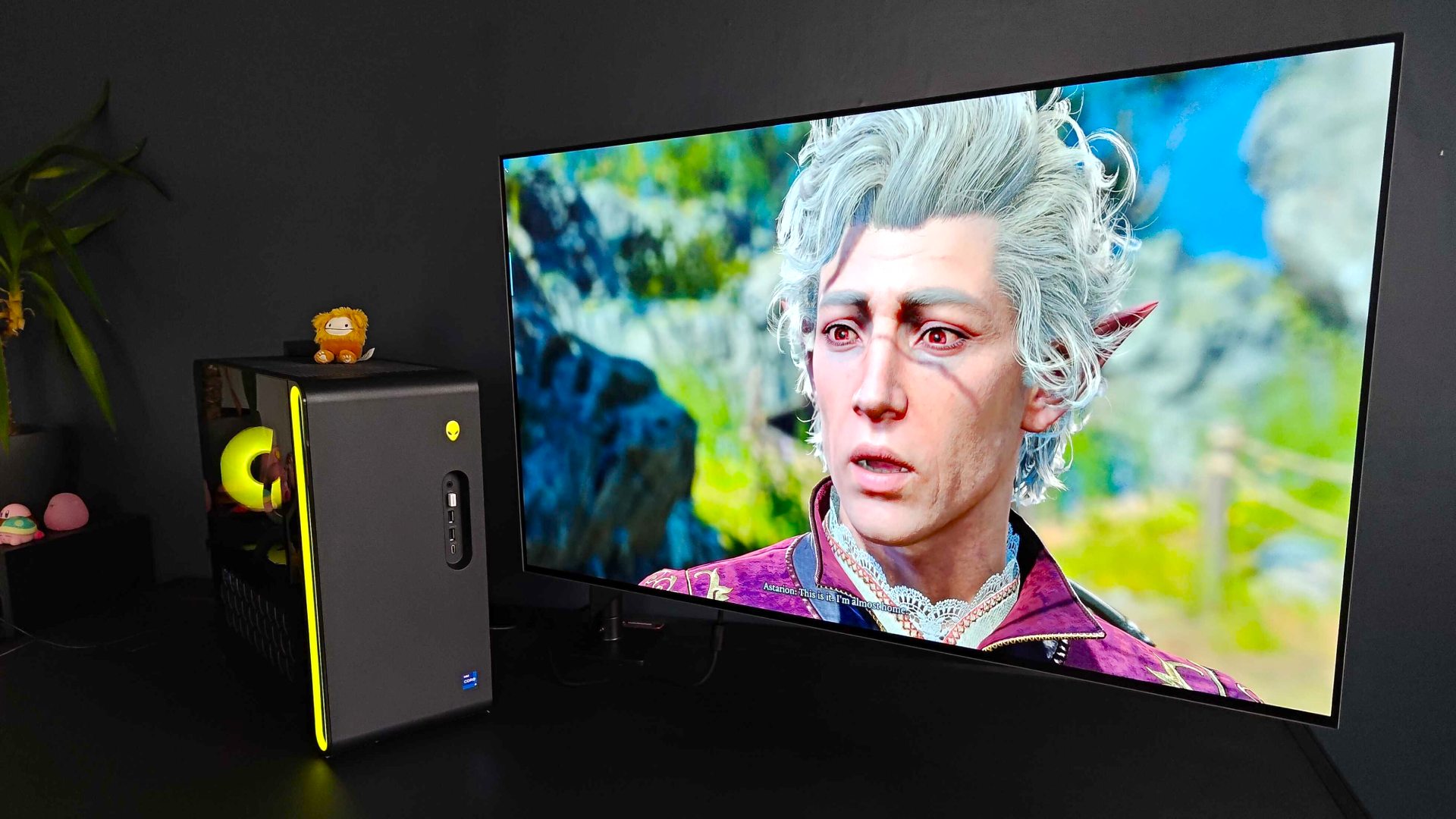
Geekbench
Single core: 2,834
Multi core: 18,932
OpenCL: 321,252
Vulkan: 222,774
3DMark
Time spy: 30,763
Fire Strike: 44,625
It's worth pointing out that the R16 is no longer Dell's flagship Alienware rig. That title now belongs to the Area-51 since it comes in RTX 5090 flavors, whereas the beefiest "Aurora 2025" model I can now find features an RTX 5080. I assume this is because including Nvidia's $2,000 GPUs in its base line up increases the price too much, whereas with its enthusiast-grade machines, the extra cost ties in with an already expensive MSRP.
To start, let’s kick off with my usual test suite of games and Cyberpunk 2077. At 4K Ultra settings, the Aurora R16 managed to maintain a 111fps average, which is exceptional considering the R15 only managed 81fps. What I will say is that from spending a lot of time in Night City throughout 2024, I’m fairly certain these figures have improved due to updates and tweaks, which is somewhat backed up by there being a frame of a difference with Ray Tracing enabled, resulting in a dip to 42fps.
Hitman 3 on the R16 pretty much hit the exact same notes as the R15 with 172fps versus 170fps. Ray tracing results measured in at a similar 77fps too, adding weight to similarities between both systems. Notably, Total War: Warhammer 3 managed to break through the 100fps barrier on the latest Alienware build, something that can be attributed to the generational CPU upgrade.
Outside of benchmarking, I used the R16 in a few scenarios worth covering. The first was during my AOC AGON Pro AG246FK review, as it provided me with an opportunity to see how high a frame rate I could reach in shooters like Overwatch 2. I don’t want to spoil my rundown, but the Aurora managed to easily satiate the screen’s 540Hz refresh rate at 1080p, resulting in a remarkable night of chaotic matches as Pharah. I also had a blast playing Halo Infinite at faster speeds than usual, but didn’t quite manage to reach over 500Hz consistently.
The RTX 4090 R16 isn't really a thing now, so if you want an idea of top-end Aurora 2025 performance, you'll want to peek at our Nvidia GeForce RTX 5080 review. I'll be sharing some separate thoughts on the RTX 5070 Ti version soon, since it's the option most players will likely go for. But, you're ultimately looking at less impressive native performance that's made up for by fancy tricks like DLSS 4 Frame Generation.
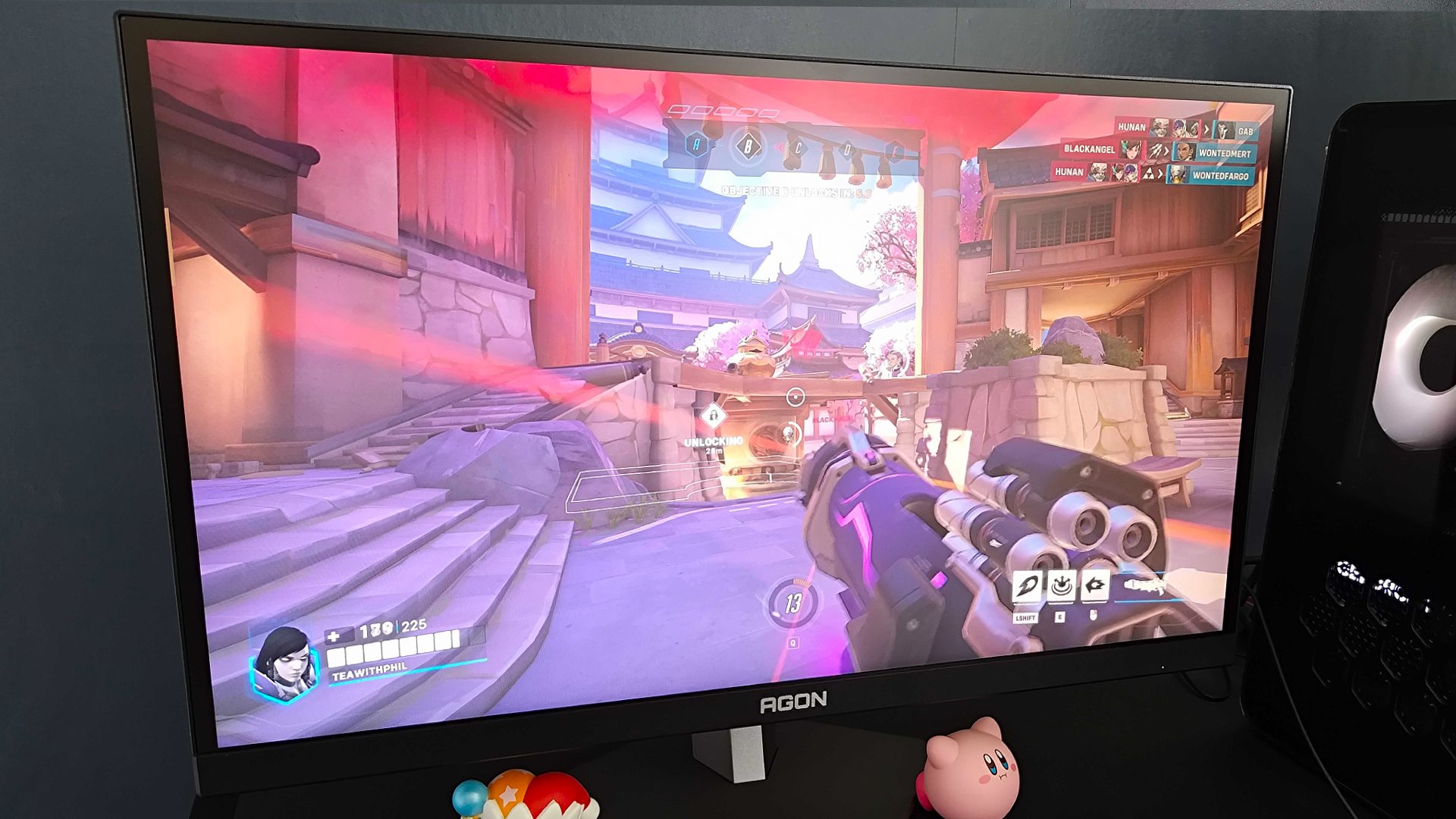
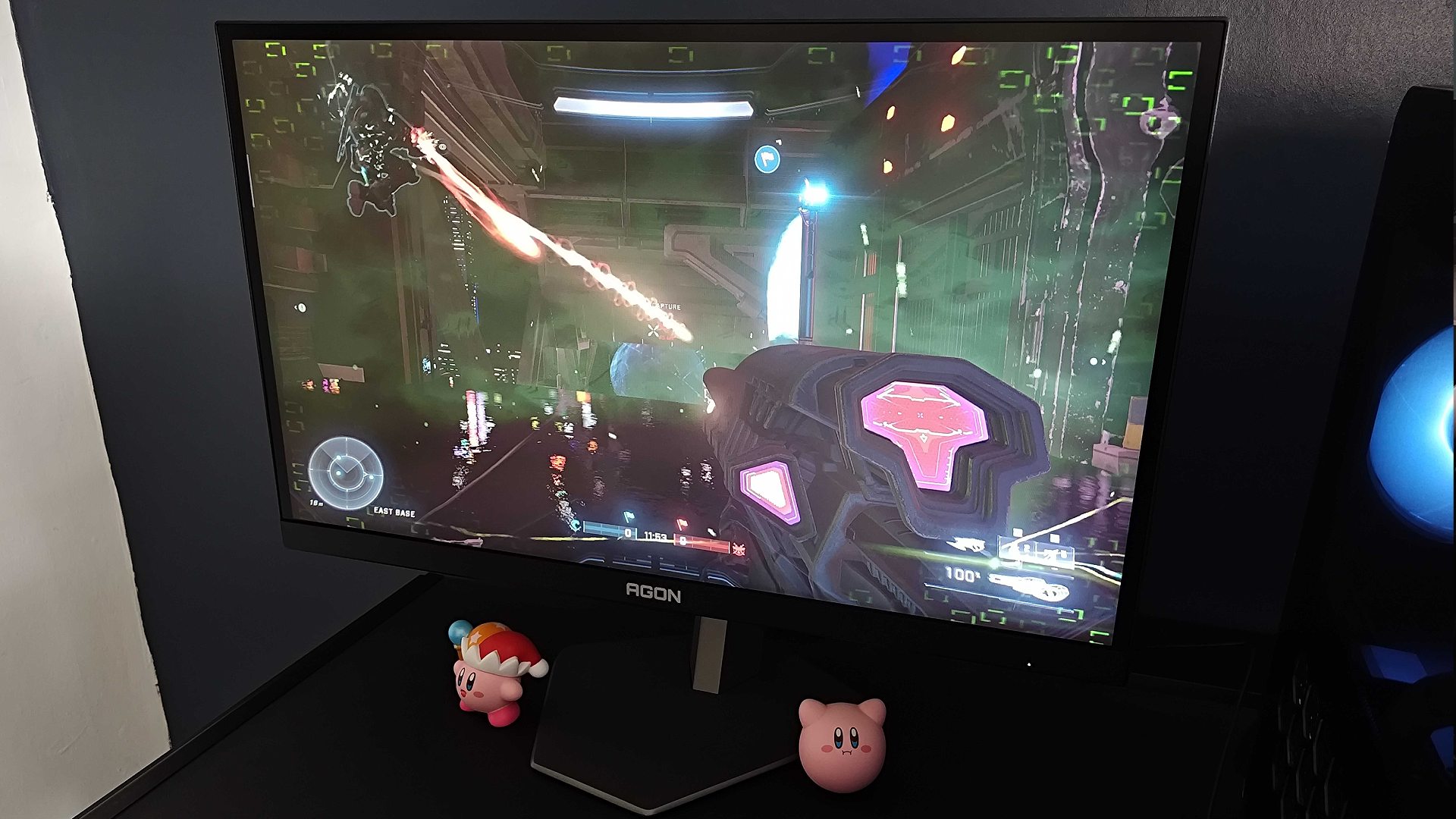
Fun fact, but I used the Aurora R15 for a chunk of my Baldur’s Gate 3 playthrough last year, so booting it up on the new R16 just felt right. Stepping back into Faerun on the Alienware rig felt just right, and the new design means those eerie noises from before are minimal. In a way, I do miss the almost atmospheric hum of the older system, but only for the sheer novelty of thinking the PC might be a mimic. Plus, the 2024 model kept CPU temperatures under 90°c in almost every game I tested, including Larian’s epic D&D outing. All in all, an exceptional experience, especially when paired with a punchy panel like the Philips Evnia 42M2N8900 with killer 4K OLED visuals.
Should you buy the Alienware Aurora R16?
Having spent a good chunk of time with the Alienware Aurora R16 as my main rig, I can say with confidence that it’s a worthwhile RTX 4090 investment. Dell’s redesign has spoiled some of the interstellar magic most people will associate with the line-up, and there’s a strong case to be made for picking up the Aurora R15 instead if it receives a decent discount. However, with killer 4K performance on its side and minimal noise, the new model better represents Dell’s capabilities within the PC space.
How I tested the Alienware Aurora R16
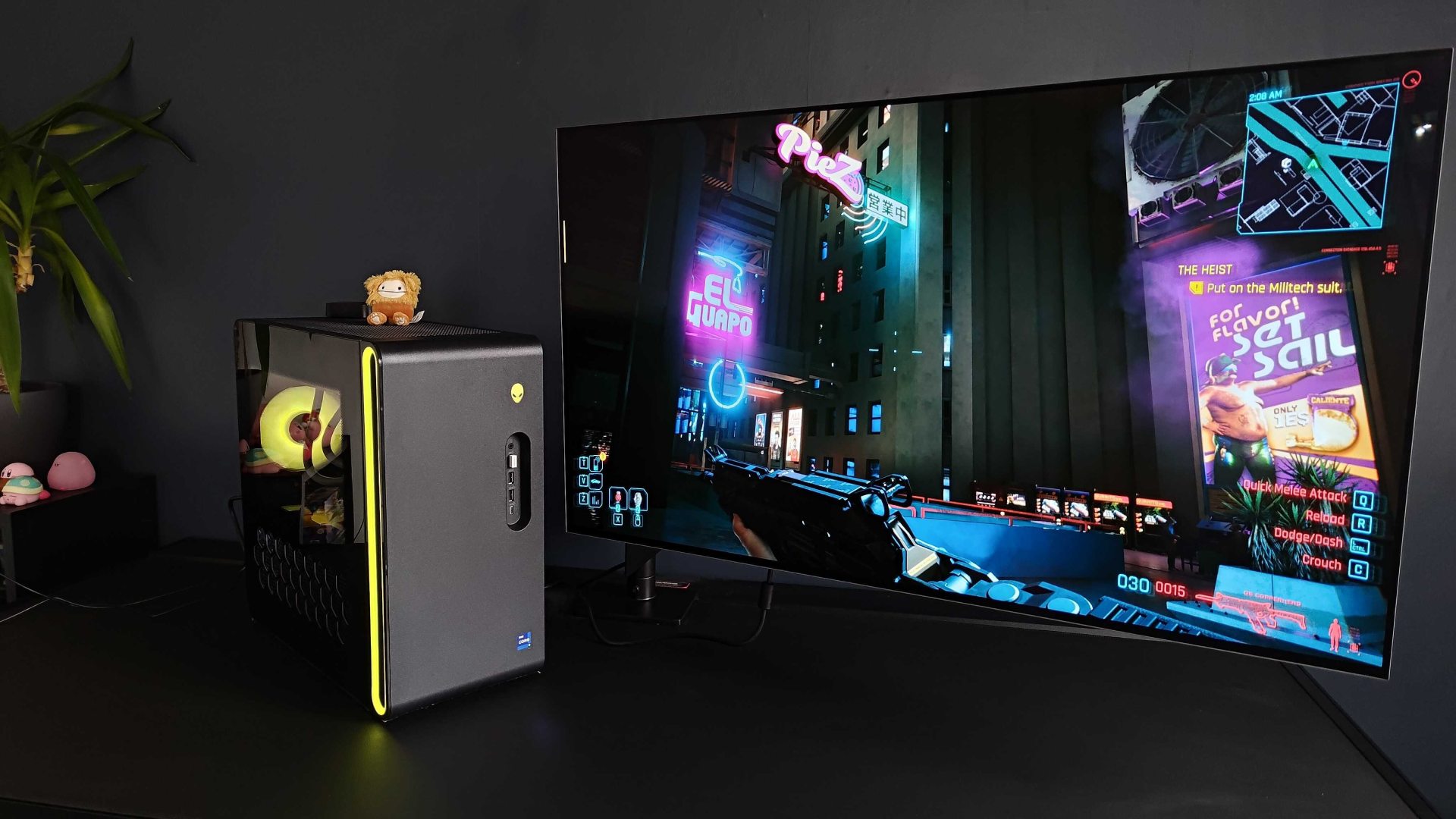
I used the Alienware Aurora R16 as my main PC for gaming and work for one month. During that time, I used a selection of test suite games like Cyberpunk 2077, Hitman 3, Shadow of the Tomb Raider, and Returnal to benchmark the system’s GPU and CPU capabilities alongside synthetic tests in 3DMark and Geekbench. In addition, I used the rig to play Overwatch 2, Halo Infinite, and Baldur’s Gate 3 in my spare time.
For more information on how we test gaming PCs and other systems, check out our full GamesRadar+ Hardware Policy.
Looking for more ways to play Steam games? Swing by the best gaming PC and the best gaming laptop for a selection of rigs. Alternatively, take a peek at the best gaming handheld for more portable options.

Phil is currently the Hardware Editor at GamesRadar+ who specialises in retro gaming, the best gaming handhelds like the Steam Deck, and more modern components like graphics cards. Having spent years offering up classic console advice and over a decade as a gaming journalist for big names like TechRadar, The Daily Star, the BBC, Den of Geek, and many more, Phil now dedicates their days to covering the latest news and offering up invaluable setup advice.
You must confirm your public display name before commenting
Please logout and then login again, you will then be prompted to enter your display name.
